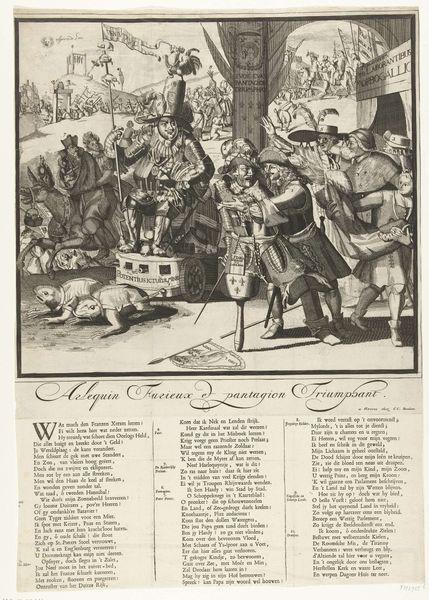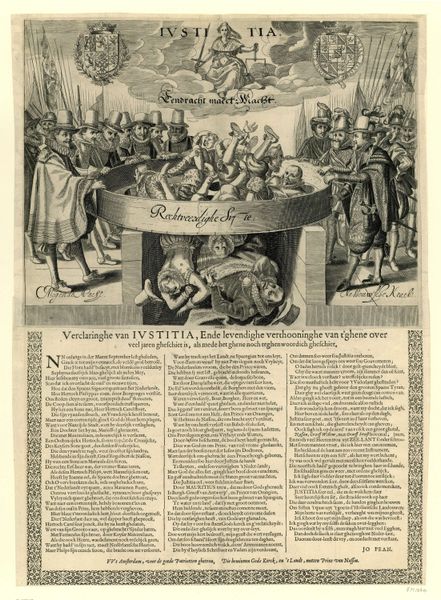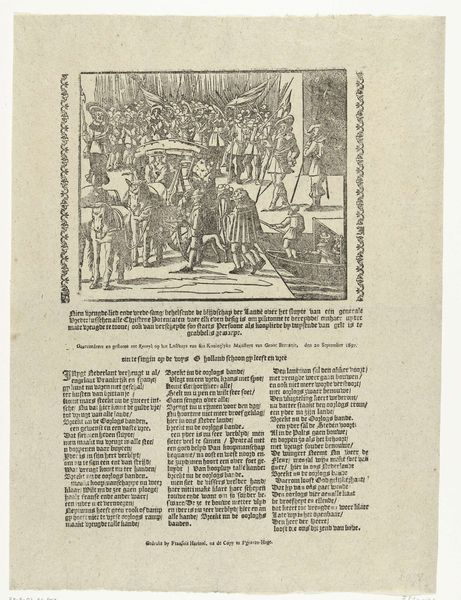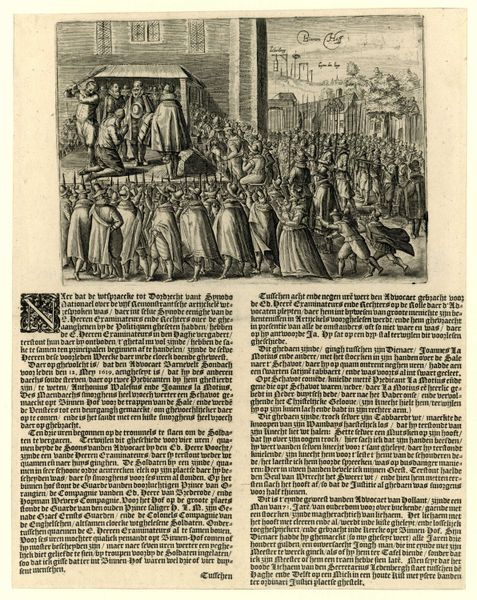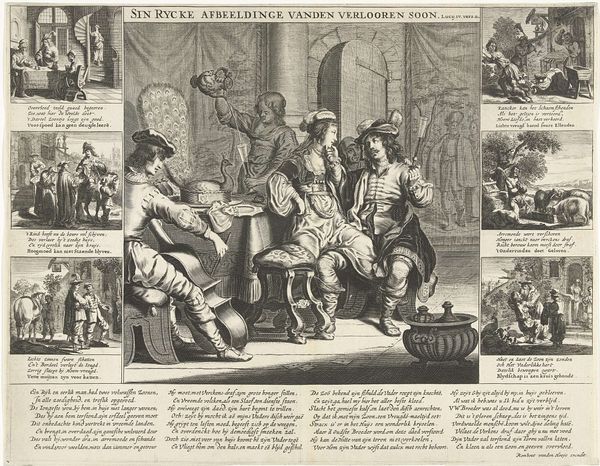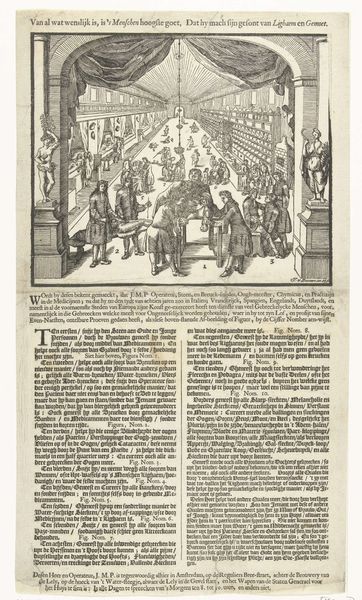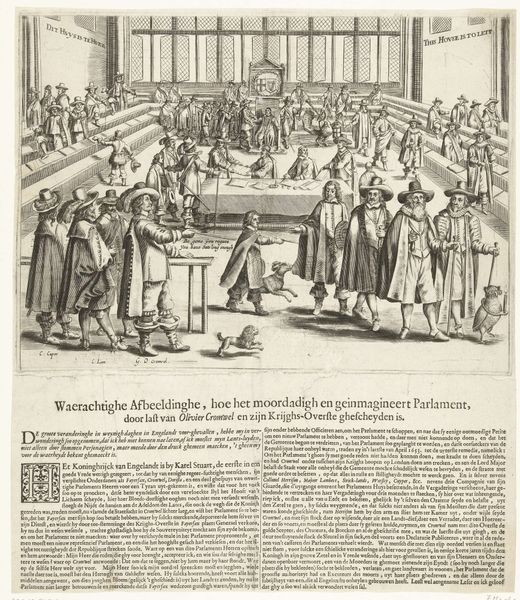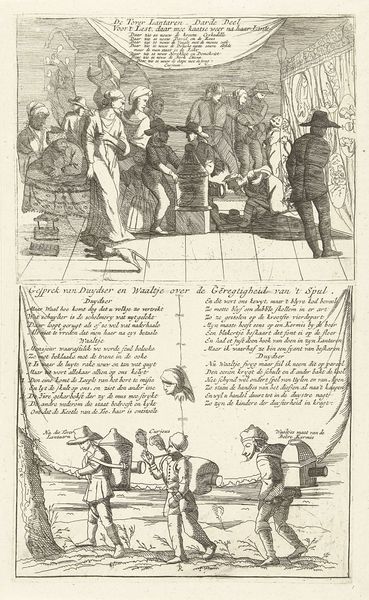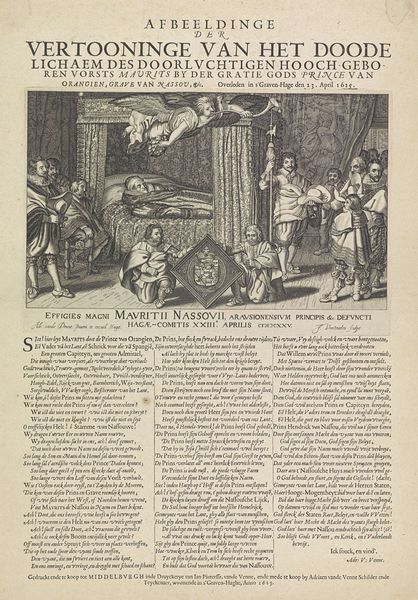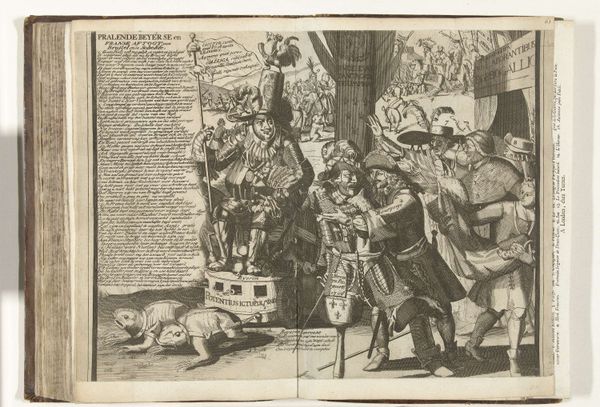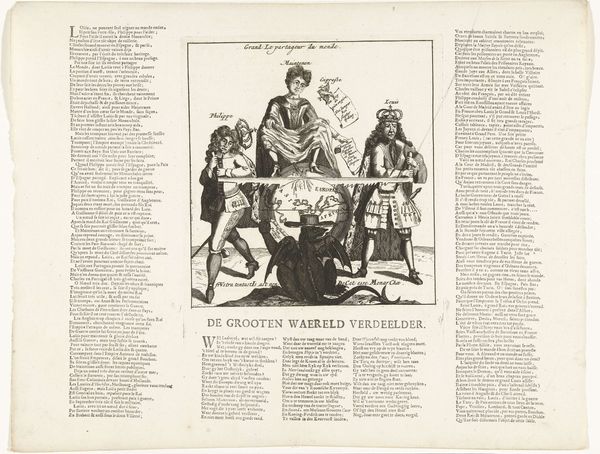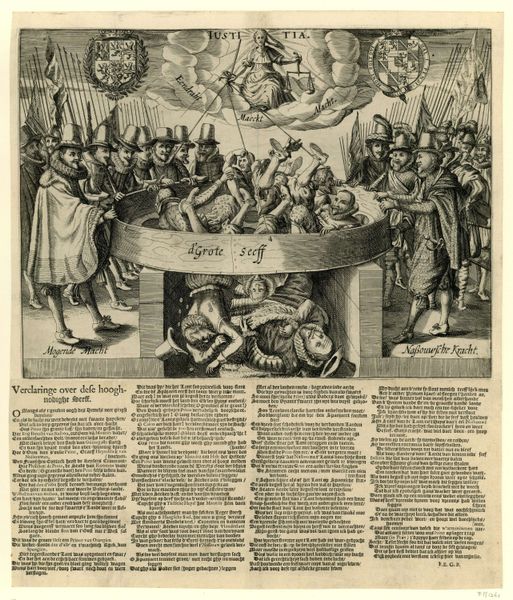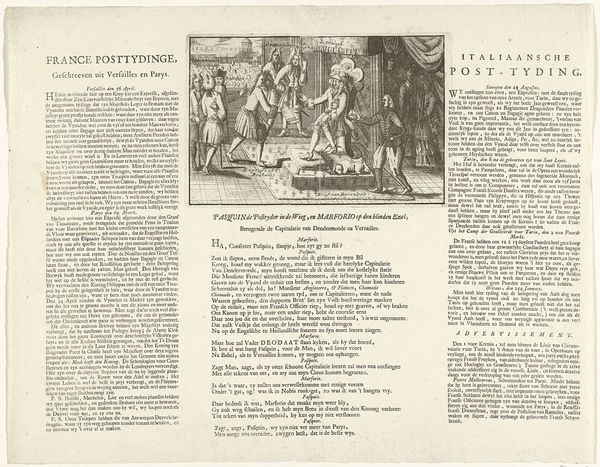
Verschijning van een geest aan het hof van de keurvorst van Brandenburg, 1660 1660
0:00
0:00
print, engraving
#
narrative-art
#
baroque
# print
#
history-painting
#
engraving
Dimensions: height 336 mm, width 234 mm
Copyright: Rijks Museum: Open Domain
Curator: Shall we spend some time with this curious 1660 engraving? It’s titled "Verschijning van een geest aan het hof van de keurvorst van Brandenburg," or "Apparition of a ghost at the court of the Elector of Brandenburg." It’s attributed to Crispijn van de Passe II, and it's housed in the Rijksmuseum. Editor: Wow, what a dramatic scene! The checkered floor, the agitated figures... There’s a palpable sense of tension and… hysteria? What am I looking at? Curator: The print depicts a rather extraordinary event that supposedly took place in December of 1660: the appearance of a ghost at the Brandenburg court in Berlin. The narrative unfolds across the image; courtiers react in astonishment as a female figure, presumably the ghost, strides into the room. Editor: "Supposedly"? Is this piece more about documentation or perhaps some kind of political statement, veiled under the guise of a supernatural visitation? The details seem so deliberately rendered—the textures of the fabrics, the way light falls across the room. The print *feels* constructed. Curator: Perhaps, and the historical context is crucial. Think about the religious and political upheavals of the time. Belief in the supernatural was widespread, and such occurrences were often interpreted as omens or signs of divine intervention. Prints like these served to disseminate such narratives to a broader public. I can easily imagine this print hung as a moral lesson, or a political critique, whatever. Editor: So, considering the material aspects, engraving enabled the widespread reproduction and circulation of this spectral event. What was likely originally a very elite and inaccessible world, the court of Brandenburg, has now been made consumable through print, influencing beliefs beyond the castle walls. That has serious material consequences, doesn't it? Curator: Precisely! It blurs the lines between witness and spectacle. We, centuries later, are now privy to the moment thanks to the hand of an engraver, ink on paper, and a tale that perhaps outgrew its original teller. All that's missing is sound… Editor: And that's what *we* get to provide to viewers right now. Thank you for inviting me to view this piece! It's nice to engage the realm of history paintings for a brief moment.
Comments
No comments
Be the first to comment and join the conversation on the ultimate creative platform.
